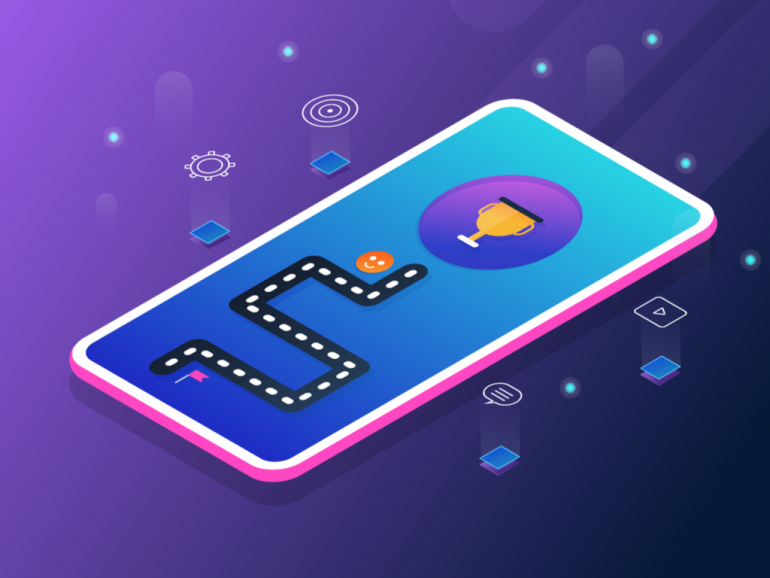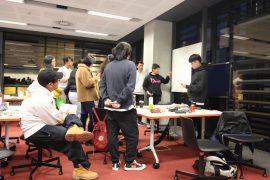In an era filled with newfound technologies and innovation, it comes as no surprise that the education sector is facing the trend of mobile learning, involving both face-to-face and digital learning environments. A product of such cause? Gamification.
While the name itself implies a less serious solution towards tackling the problem of youth unemployment, gamification as a learning tool presents a marriage of innovative learning and technology, driven by game design principles. And with the permeating problem of shortened student attention spans, gamified learning is becoming more important than ever.
This post was contributed by Brent Liang (4th year law), Elisa Lillicrap (2nd year commerce), and Kirath Singh (3rd year computer science).
As three University of Sydney students, we saw this as a key opportunity and developed Chance.io, a two-sided smart platform that uses gamification and AI to develop students’ soft skills, such as problem-solving and communication, whilst connecting them with employers.

After successfully winning the Hult Prize Dubai Regional Finals, a prestigious global social enterprise competition working with the Clinton Foundation and United Nations, we’ll be spending two months in a London Accelerator to develop Chance.io further.
What is ‘gamification’?
For those unfamiliar with ‘gamification’, there are two types;
- Structural gamification is the use of game mechanics to drive the learner through content without any changes being made such as badges, points, levels and a leaderboard. The idea is to motivate students to engage with the content by offering them rewards and incentives.
- Content gamification involves the actual content being changed to be more ‘game-like’, whether that’s through a series of challenges, activities, stories or characters.
Why gamification works
According to a survey conducted by TalentLMS, 70% of university students said their motivation and productiveness would improve if learning environments integrated gamification.
Whether the objective is increased learning engagement, skill proficiency or retention of learnings, there are numerous benefits gamification brings. But ultimately, it comes down to enhancing the overall learning experience by making it fun.
Where soft skills development meets gamification
While the scope for gamification in education holds vast potential, it is especially true for soft skills development, where the future of work continues to transcend, dictating the direction of what and how students learn, shadowed by the looming threat of job automation.
In 2016, two researchers at Clemson University in South Carolina analysed the impact of gamification on 21st-century skills.
They found that students either learned more or showed more improvement in skills such as critical thinking and problem solving when game design elements of competition, collaboration, and role-playing were incorporated.
As Kurt Squire, a professor at the University of California states, “The goal is to think about games in the context of a broader pedagogical model… it’s never games or traditional activity—it’s always about the interplay between them.”
“There’s another reason why games can be so good at teaching certain soft skills, such as resilience, problem solving and collaboration: They put us in a state of play. That, in turn, makes taking risks and failing—acts we typically try to avoid—part of the process, and even the excitement.”
Application in the real world: the link to employment
Chance.io is one such example, harnessing both gamification and scenario-based learning to create an optimal learning environment for developing soft skills.
This is achieved through simulating a game-like experience by running a series of challenges co-designed with companies, having a points system, and offering various incentives that translate to real life outcomes. These can range from advancing a job application and interview round, to receiving personalised career coaching and connecting with recruiters.
Where the power of technology deepens is through the platform’s AI, which is used to measure and track students’ development of soft skills. This enables real-time feedback to be provided to students, as well as inform potential employers of high calibre candidates for recruitment.
What’s next?
Gamification is the future of education. The way of shifting how students learn can be disrupted through educators co-opting techniques used by game developers to keep students engaged in their classrooms. And as the next phase of work continues to evolve, we ask: what better way to enable students to become job ready, than by harnessing the power of innovation and technology?
If you’re an educator interested in learning more or involved with soft skill development and gamification, we are keen to speak with you! Get in touch by emailing [email protected].





